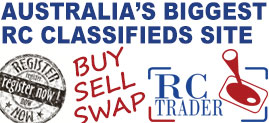- Home
- Members
- MOPs
- Club Tools
- Forms
- Add an Event
- Incidents / Accidents
- Manual of Procedures
- 2025 Club Activity Program
- MAAA Club Policies
- Club How To documents
- Insurance Support
- Chuck Gliders
- Club Assistance Scheme
- Trainee Pilot logbook
- News
- Events
- Aeromodelling
- About
- Latest News
- Contact
- Newsletters
- MAAA Conference
The History of the Hobart Model Aero Club as recalled by Garth Wilmot
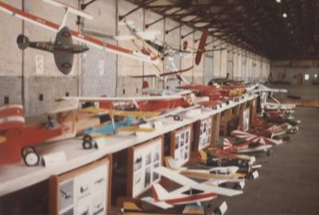 I will start with the story of my early involvement in HMAC as I recall it.
I will start with the story of my early involvement in HMAC as I recall it.
After meddling with solid scale models and some rubber powered model with limited success I was introduced to control-line models in 1948 by a work colleague, the late Lawrie Baxter.
I did actually buy a model from him with an ED Mk III power plant. ( I use that term very loosely.)
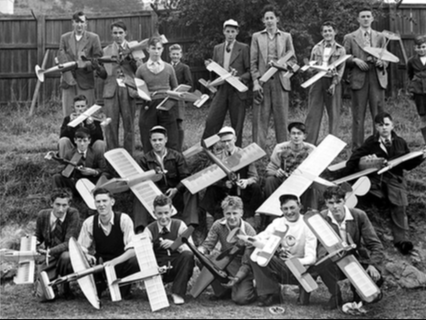 I joined the HMAC And attended a public control-line flying demonstration at the South Hobart Soccer Field at South Hobart which featured modellers from Hobart and Launceston. There was a group photograph and I declined to join in for some reason, probably because I didn't have a model at that stage.
I joined the HMAC And attended a public control-line flying demonstration at the South Hobart Soccer Field at South Hobart which featured modellers from Hobart and Launceston. There was a group photograph and I declined to join in for some reason, probably because I didn't have a model at that stage.
Unfortunately most of the modellers attending are no longer with us. David Christian and Geoff Leverton are the only current members in the photo, with Alan Rough, Myles Maguiness, Gerald Haley and the late Bruce Synott being recent members.
Even before the formation of HMAC there was a group of young modellers from the West Hobart area building and flying gliders and rubber powered models. The group was known as WHAMA. which I would assume stood for West Hobart Aeromodellers Association. Among them were David Reynolds, Royce Wheeler and well known Hobart photographer Don Stephens. David and Royce went on to become members of HMAC.
Several HMAC members were also members of the Hobart Society of Model Engineers and were involved in the vey popular exhibitions at the Hobart City Hall. I now shudder to think of the danger in flying quite large control-line models and the demonstration of tethered speed cars.
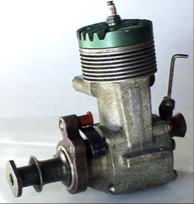 I was really hooked on the hobby and did most of my early model building in David Reynolds workshop and he spent a lot of time helping me to achieve some level of skill.
I was really hooked on the hobby and did most of my early model building in David Reynolds workshop and he spent a lot of time helping me to achieve some level of skill.
I seem to recall that further flying demonstrations were held at Clare Street Oval in 1950 and 1951, but I wouldn t guarantee the actual dates. I know that I put up many flights with an Amco 3.5 model at the first one, but I didn't attend the second as I was absent interstate for a couple of years from September 1950. I know that I was secretary of HMAC in 1950.
In the early post-war years it was difficult to purchase much in the way of engines in Australia. The Hearns brothers did produce a copy of the American McCoy 60 with somewhat mixed results it certainly lacked
the power of the McCoy. At the time it was very difficult to import items from other than British Empire countries, however Gerald Haley had an aunt in the US and managed to secure a McCoy which he used on spark ignition. What a brute can you imagine hand starting a racing motor such as that? I remember him wearing a finger stall and taking it off to empty the blood out!
Apparently the same import restrictions did not apply in South Africa so the more affluent members bought Olsen 60s from that source.
A friendly P.M.G. worker helped to get these items through customs by turning a blind eye when he could.
On my return to Tasmania I found that things had changed with Anderson Spitfires and Atwood Glo-devils all the rage. I did obtain an Atwood and later an Anderson which I never got to use.
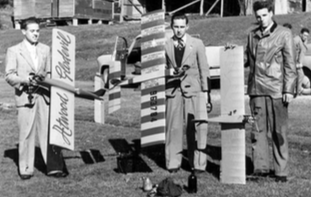 The lure of motor cycles and motor cycle racing took over and I did not do a lot of modelling for a while. I sold the Anderson to help fund a new bike! Tommy D'Alton, who was the MHR for the West Coast sponsored the trip to Queenstown and Zeehan for Zeehan's Jubilee. There were four in the group, one being from the Model Engineers who took a tether car. The Model Engineer Exhibitions were still being held to raise funds for a model park and I do remember flying with three in the circle I think I was using a borrowed Elphin 1.5 cc diesel. The other two crashed and as I continued to rotate, the crashed models lines wound around my legs and I fell over.
The lure of motor cycles and motor cycle racing took over and I did not do a lot of modelling for a while. I sold the Anderson to help fund a new bike! Tommy D'Alton, who was the MHR for the West Coast sponsored the trip to Queenstown and Zeehan for Zeehan's Jubilee. There were four in the group, one being from the Model Engineers who took a tether car. The Model Engineer Exhibitions were still being held to raise funds for a model park and I do remember flying with three in the circle I think I was using a borrowed Elphin 1.5 cc diesel. The other two crashed and as I continued to rotate, the crashed models lines wound around my legs and I fell over.
I also remember Len Quinn flying a Lockheed Constellation powered by four Frog 500s in that restricted space madness!
After raising a fair bit of money from exhibitions the Model Engineers were granted land at what is now a sewerage treatment plant at Berriedale. The site was graded into two levels and fenced with the lower area to be used for model flying and the upper one for tethered cars and steam trains. The area was fenced and an expensive car track and small clubhouse constructed and this great concept appeared to be really on the go.
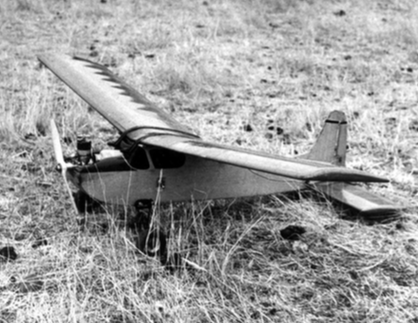 Unfortunately the older predominating model engineering fraternity decided that they no longer wanted aero modelling as part of their activities and excluded this type of membership. Subsequently the whole project collapsed and most of the money gained from exhibitions was wasted and a visionary concept lost.
Unfortunately the older predominating model engineering fraternity decided that they no longer wanted aero modelling as part of their activities and excluded this type of membership. Subsequently the whole project collapsed and most of the money gained from exhibitions was wasted and a visionary concept lost.
In the fifties there were clubs in Hobart, New Norfolk, Launceston, and Burnie (I think) which at some time led to the formation of the TMAA and subsequent affiliation with MAAA. Somehow I became treasurer of the TMAA leading up to the running of the 1957/58 Australian national championships held at Campbelltown.
At this time this was an enormous undertaking, however we did receive a great deal of help from the Victorians in the running of the various events. Most of the organising was done by Len Quinn, David Reynolds, Keith Leonard, Ken de Bomford and yours truly. From my point of view I had the task of the financial management which even included a lot of the accommodation details and payments.
With the exception of David Reynolds who was busy attending to his own models, we really worked over the duration of the event although I spent a good deal of time looking for fly away free flight models as far away as the Quornhall airstrip.
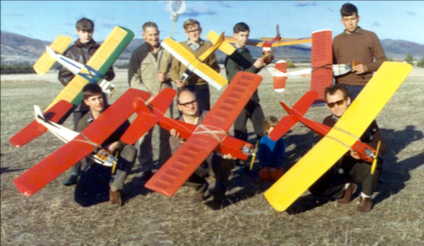 This nationals featured the first radio control championship which was won by Peter Waddle, the father of well known and highly respected Greg Waddle who has, unfortunately, passed away.
This nationals featured the first radio control championship which was won by Peter Waddle, the father of well known and highly respected Greg Waddle who has, unfortunately, passed away.
I am not sure when the TMAA went into recess but I think interest in the hobby declined after the effort of running the nationals.
I did spend a little time on small sport free flight models after the nationals and spent a couple of years working on the North West Coast around 1962 to 1964. On my return and after a visit from Steve Ralph I took the plunge and invested in an OS Pixie single channel outfit. I caught up with Geoff Leverton, Fred Cherry and Bruce Synott and we went flying at Cambridge and Richmond.
As far as I can recall the club was formed in 1966 as the number of single channel fliers increased. The first preliminary meeting was held at the home of David Reynolds at 10 Knocklofty Terrace, West Hobart, with subsequent meetings held at my home at 15 Courtney Street, Lenah Valley. Among the foundation or early members were Fred Cherry (now living in W.A.), Reg Bowden, Garth Wilmot, Geoff Leverton, Bruce Synott, Bob Morrison, Peter Foxton, Bert van Omen (who was the proprietor of the Hobby Lobby in Murray Street) and David Reynolds.
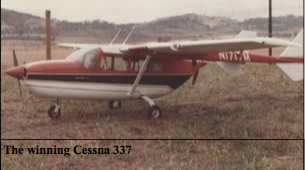 The club was originally called the Tasmanian Radio Control Association and was formed to ensure that insurance could be obtained and was open to any type of radio control enthusiast within the state. The club affiliated with the MAAA directly as there was no state body.
The club was originally called the Tasmanian Radio Control Association and was formed to ensure that insurance could be obtained and was open to any type of radio control enthusiast within the state. The club affiliated with the MAAA directly as there was no state body.
Members joined from the North West and Launceston areas and we even had members on the West Coast. In the 1070s we had a model yachting section in addition to the aeromodelling fraternity and some members (self included) participated in both areas. In due course the Evandale Radio Control Club and Ris- don Brook Model Yacht Club were formed as numbers increased and these moves received the blessing of the TRCA.
Early flying took place around Richmond until we received permission to use pad- docks at Carrington owned by Mr. Bowen who was quite sympathetic to our needs.
We seemed to move from paddock to paddock on Carrington and even had the late John Emms fly a float plane off a dam on the property. We were there for quite a few years, however when the sons took over the running of the property, we were not so welcome and eventually given our marching orders. We then flew off a couple of different sites opposite our present field and had to put up with fairly primitive conditions.
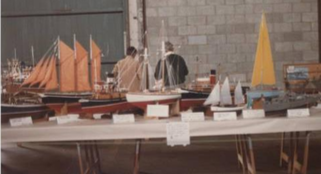 During the 70s we conducted annual state championships covering aerobatics, gliding, scale and pylon racing and the event usually drew top class competitors from interstate. In those days points gained at state championships counted toward a place in world championship teams and we could always look forward to hosting the now legends of Australian pattern flying. Such competitors as Tom Prosser, Barry Angus, Johnno McGrane, Ian Watts and Jeff Tracey were regular visitors.
During the 70s we conducted annual state championships covering aerobatics, gliding, scale and pylon racing and the event usually drew top class competitors from interstate. In those days points gained at state championships counted toward a place in world championship teams and we could always look forward to hosting the now legends of Australian pattern flying. Such competitors as Tom Prosser, Barry Angus, Johnno McGrane, Ian Watts and Jeff Tracey were regular visitors.
We even had world class and Canadian champion Ivan Christenson compete on one occasion and his visit resulted in the championships being the subject of a double page spread in the Saturday Evening News, radio interviews and the biggest spectator crowd one could imagine. I had the privilege of hosting Ivan and his family while he was in Tasmania.
Then came the opportunity to negotiate for the use of the old Richmond Racecourse. I understand that this land was acquired by the State Government as part of some racing reorganisation and that it was initially offered to the Richmond Council who declined the offer. It was ironic that the Clarence Council wanted control many years later. It was decided that the area was to be a multi-use recreational area and that we could have a 21 year lease, however, for some reason, this was changed to an annual licence.
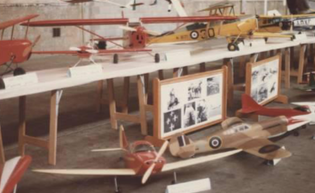 The first year's licence payment was made in October 1979 and we were to share the field with the south Eastern Trotting Owners, Trainers and Drivers Association and that Eric Fleming would have grazing rights.
The first year's licence payment was made in October 1979 and we were to share the field with the south Eastern Trotting Owners, Trainers and Drivers Association and that Eric Fleming would have grazing rights.
The field was virtually derelict with a dilapidated old toilet, fences and concrete rubble to be removed. At the first working bee the toilet was demolished by a good thump from Bernard McKay's truck, but unfortunately Wayne Moore was still inside.
A good deal of field preparation was carried out by Eric Fleming with assistance from member working bees. Water lines were installed from the main road and an entrance roadway and parking area prepared. I vividly remember the always impatient Bruce Synott stubbornly taking a short cut from the top entrance and getting his Honda Civic bogged to the axles and having to leave it until the next day to be towed out.
A grant of $2,500 was received from the Division of Sport and Recreation to assist with the construction of the toilet block and this work was mainly carried out by members. The large shed to be used as a clubhouse was also erected by volunteer labour making several working bees necessary.
 At a special general meeting held on 7th October 1980 rule changes were adopted to enable the club to become incorporated. By March 1981 the entrance gate and gravelled road were completed and a Rover 30 cut ride-on mower was purchased. It was around this time that we actually started to fly at Kelly Field.
At a special general meeting held on 7th October 1980 rule changes were adopted to enable the club to become incorporated. By March 1981 the entrance gate and gravelled road were completed and a Rover 30 cut ride-on mower was purchased. It was around this time that we actually started to fly at Kelly Field.
The period December 1982 to March 1983 was a very busy time for the club. It was decided to participate in the Tasmanian Fiesta by conducting and organising the Tasmanian Fiesta Model Exhibition from 28th December to 4th January at Princes Wharf No.1 Shed. Other model clubs were invited to participate on a profit share basis and, although it was a lot of hard work, the exhibition was very successful. The subsequent profits helped to put the club on its feet and provided funds to assist in the running of the Kelly Field Scale Fly-in and Trans Tasman Scale Challenge.
We were accorded the honour of conducting the Trans Tasman which was for scale competition between teams from Australia and New Zealand and this was held on the March long weekend in 1983. To ensue the success of this prestigious event a fenced compound was completed and a marquee hired to house models for judging.
A very successful series of events were held and I would think it was the most memorable scale meeting ever held in this state, and probably, right up there with the Campbell Town nationals and the State Pattern Championship won by Ivan Kristenson.
Giant Scale was won by Ken Lawson (Phoenix Flyers) with Pitts S2A, David Masterton (NSW) with a Super Chipmunk and Phil Chugg with a Tipsy Junior filling the minor places. Stand-off Scale was won by David Masterton with a Cessna 337 followed by Ken Lawson with a Sea Hornet and Eddie Peypers with a DC3. David Masterton went on to win the World Scale Championship with an upgraded version of the Cessna.
Australia came out on top in the Trans Tasman with David Masterton scoring top points followed by Arthur Heenan of New Zealand with a Fletcher-BVU. There were quite a few notable contestants from interstate competing in the events other than the actual Trans Tasman Challenge including my highly regarded old friend the late Leo O'Reilly.
Around this time Jan Wilmot was made a life member of the club in appreciation of her filling the position of treasurer since the inception of the club.
On 5th February 1983 the four active clubs in the state held a meeting and decided to form the Tasmanian Model Aeronautical Association thus relieving the club (then still called the Tasmanian Radio Control Association) from the responsibility of acting as the state body.
I think club records should cover the story from here on.
And perhaps someone else may like to take up writing the story from hereon.
Looking back on the 60s and 70s there was a quite amazing transition from primitive hit and miss single channel flying to the point where everybody had good reliable radio control equipment. Our original single channel sets were super regen as against superhet meaning we could only fly two models at a time, one on 27MHz and one on 40MHz.
OS Pixies were supplied with a centre loaded antenna and my first one was on 40 MHz was supplied with a 27MHz antenna. I couldn't work out why I continually had a range problem. On my first flight the model disappeared over the hills toward Tea Tree and it took two days of searching to recover it.
I can remember John Caldwell having an old heavyweight transmitter which sat on the ground with a button on the end of an extension. He used to run and hand launch his model and grab the control button from me as he went past.
My next radio was a Grundig tuned filter outfit purchased second hand from Anton Benada and which had sticks operating micro-switches on top of the case. I had a great deal of success with this outfit even though it was still super regen.
Other members were buying reed sets second hand as these were becoming readily available due to the advent of proportional radio. I did have an F&M reed set before I could afford to go proportional.
Kraft radios were well and truly the radio to have and Owen Badcock used to import a few for friends occasionally but they were expensive, and in the event of any problem, they had to be returned to the US. I recall Anton Benada paying 550 pounds ($1,100) for a new Kraft and that was a hell of a lot of money in those days.
I had to take out a loan to buy my first second hand Kraft which had a huge receiver and large servos with no rotary outputs and single push-pull rack outputs. It took some planning to make sure the servos went the right way for the surfaces.
Soon after Victorian Barry Angus started importing Kraft radios and subsequently set up Kraft Systems at Geelong with Brian Green which meant local radio servicing was now available.
Kraft certainly dominated the Australian market for some considerable time and I had meanwhile set up a retail business, partly because of the lack of a decent hobby shop in Hobart. I had a Kraft agency and supplied most of the radio control equipment in the south of the state. American radio sets certainly dominated the market although alternatives could be sourced from the UK or Europe.
When Futaba radios came to Australia they were viewed with some suspicion, however they were soon in general use due to a much lower price. Other brands followed including Micro, KO Digiace, JR. etc. and lower Japanese prices eventually saw the demise of the US manufacture of radio sets.
Our hobby has never been cheaper in real terms than it is now and the advance in electronics and other items we use is quite amazing. In years gone by we would have to make many of the accessories we now take for granted and development of the ARF has probably drawn many new members who probably lack the skills to scratch build to the club.
Stay in the know. Subscribe.
Aircraft Types
Privacy Policy
Copyright © 2022 MAAA. All Rights Reserved.

